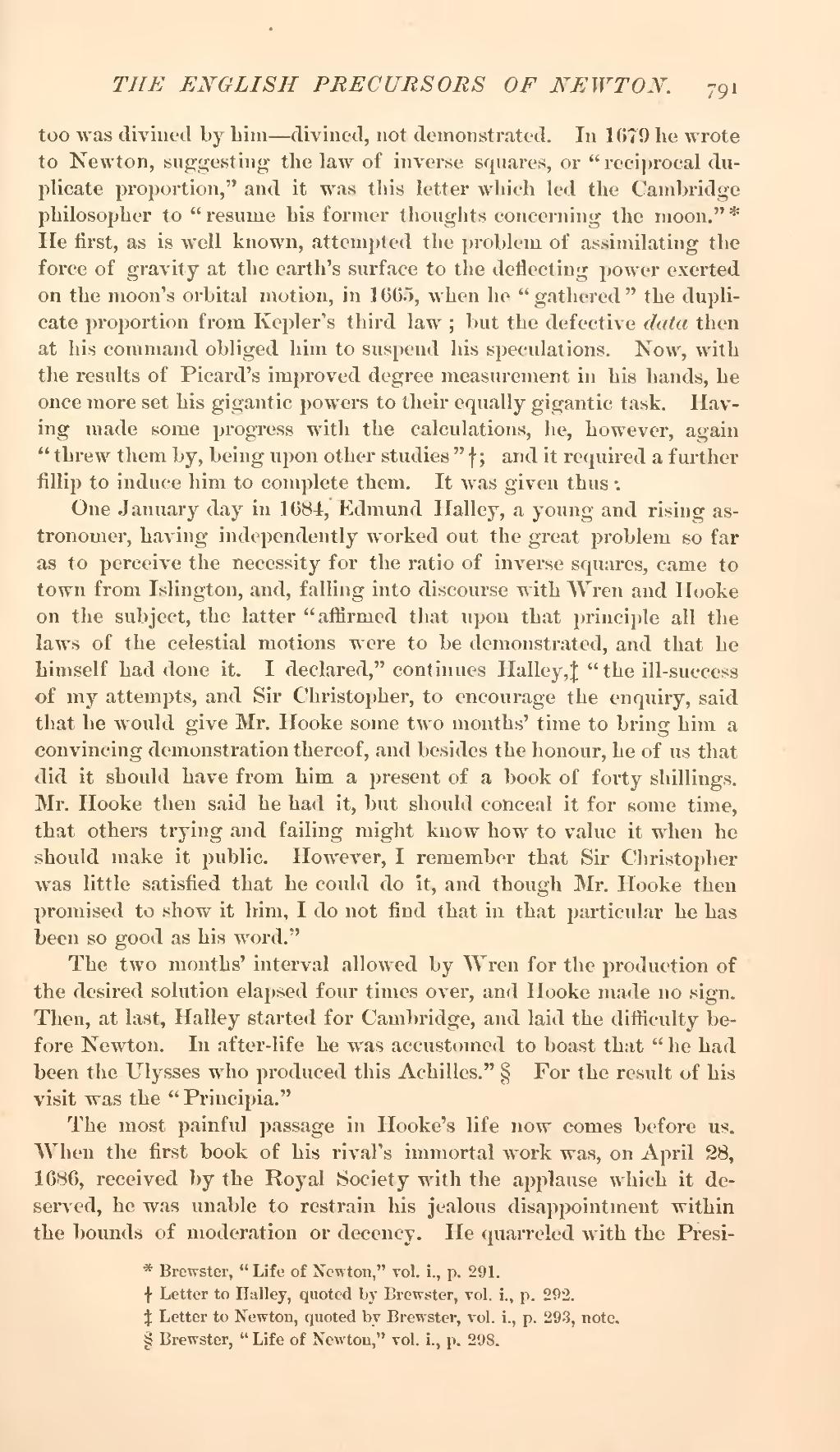too was divined by him—divined, not demonstrated. In 1679 he wrote to Newton, suggesting the law of inverse squares, or "reciprocal duplicate proportion," and it was this letter which led the Cambridge philosopher to "resume his former thoughts concerning the moon."[1] He first, as is well known, attempted the problem of assimilating the force of gravity at the earth's surface to the deflecting power exerted on the moon's orbital motion, in 1665, when he "gathered" the duplicate proportion from Kepler's third law; but the defective data then at his command obliged him to suspend his speculations. Now, with the results of Picard's improved degree measurement in his hands, he once more set his gigantic powers to their equally gigantic task. Having made some progress with the calculations, he, however, again "threw them by, being upon other studies"[2]; and it required a further fillip to induce him to complete them. It was given thus:
One January day in 1684, Edmund Halley, a young and rising astronomer, having independently worked out the great problem so far as to perceive the necessity for the ratio of inverse squares, came to town from Islington, and, falling into discourse with Wren and Hooke on the subject, the latter "affirmed that upon that principle all the laws of the celestial motions were to be demonstrated, and that he himself had done it. I declared," continues Halley,[3] "the ill-success of my attempts, and Sir Christopher, to encourage the enquiry, said that he would give Mr. Hooke some two months' time to bring him a convincing demonstration thereof, and besides the honour, he of us that did it should have from him a present of a book of forty shillings. Mr. Hooke then said he had it, but should conceal it for some time, that others trying and failing might know how to value it when he should make it public. However, I remember that Sir Christopher was little satisfied that he could do it, and though Mr. Hooke then promised to show it him, I do not find that in that particular he has been so good as his word."
The two months' interval allowed by Wren for the production of the desired solution elapsed four times over, and Hooke made no sign. Then, at last, Halley started for Cambridge, and laid the difficulty before Newton. In after-life he was accustomed to boast that "he had been the Ulysses who produced this Achilles."[4] For the result of his visit was the "Principia."
The most painful passage in Hooke's life now comes before us. When the first book of his rival's immortal work was, on April 28, 1686, received by the Royal Society with the applause which it deserved, he was unable to restrain his jealous disappointment within the bounds of moderation or decency. He quarreled with the Presi-
